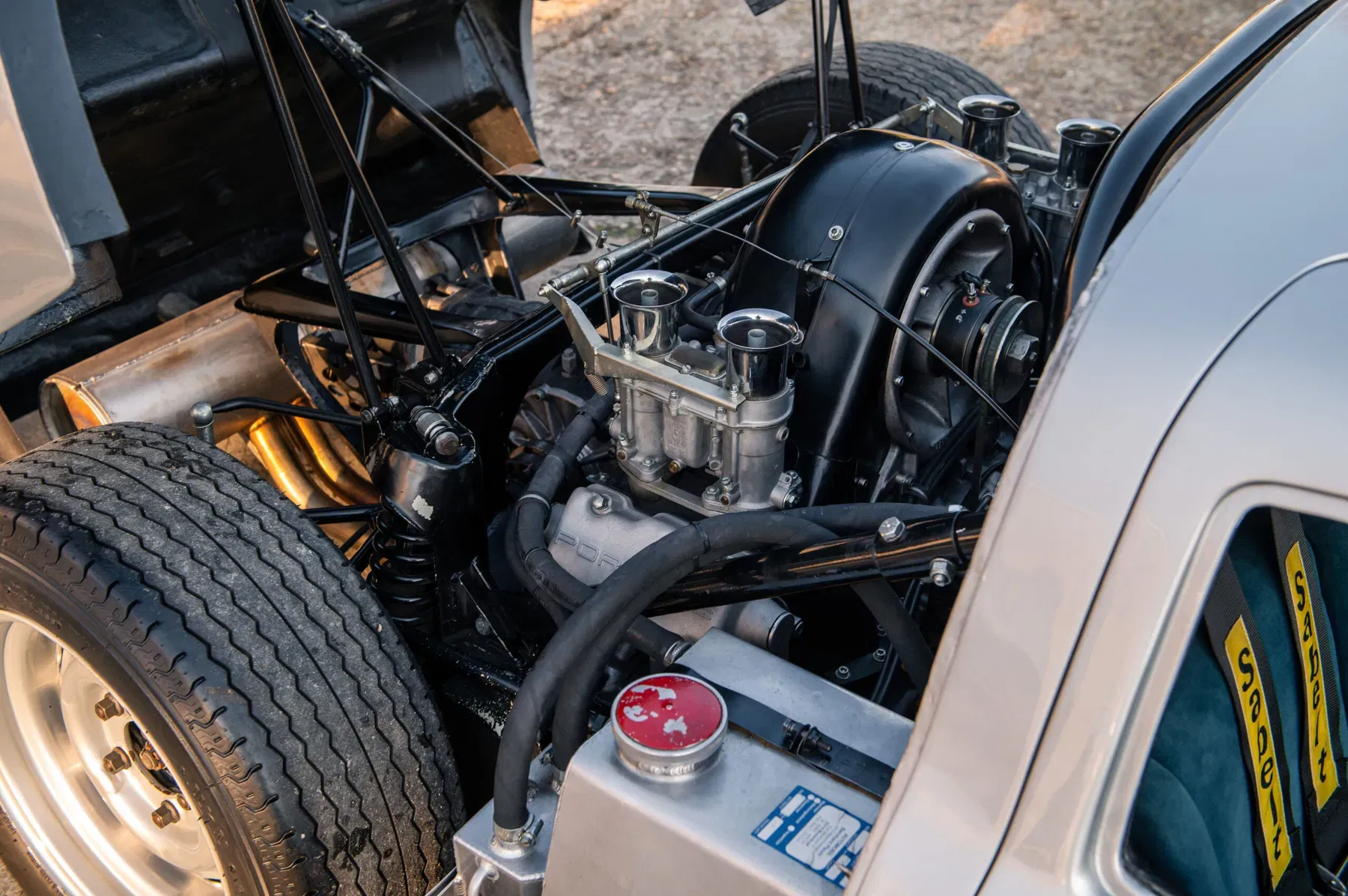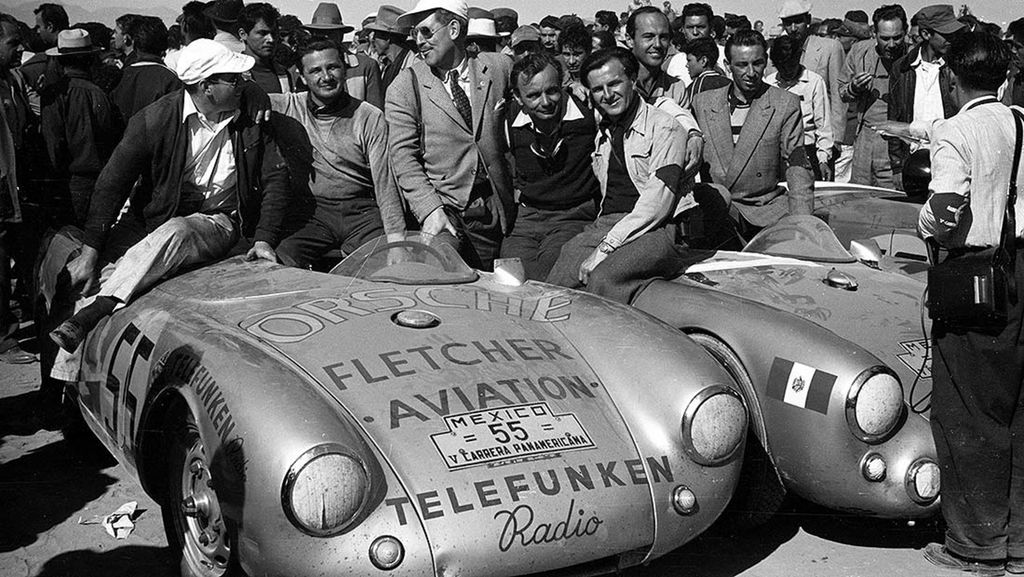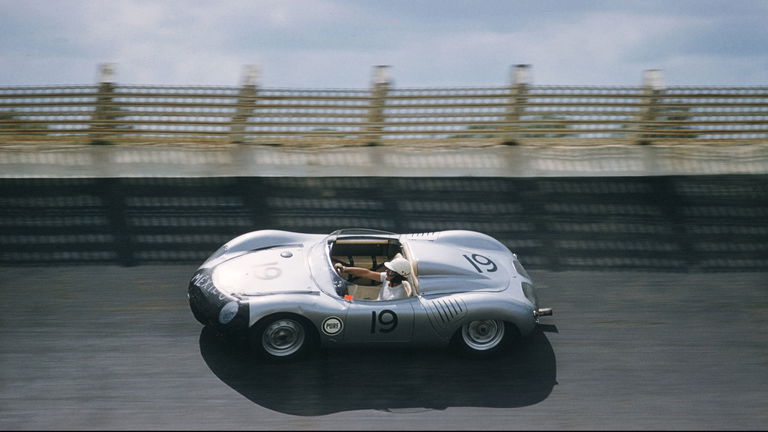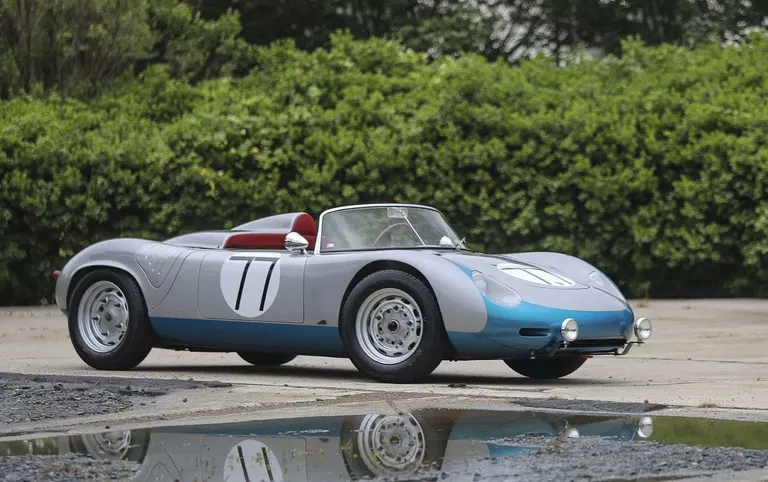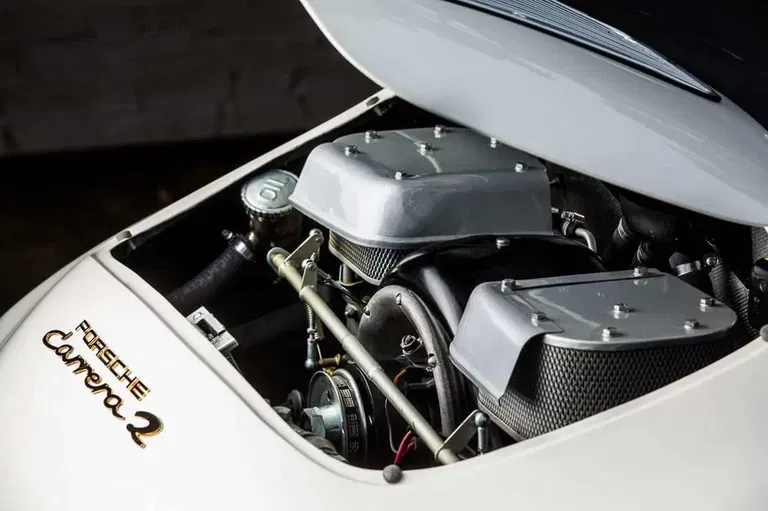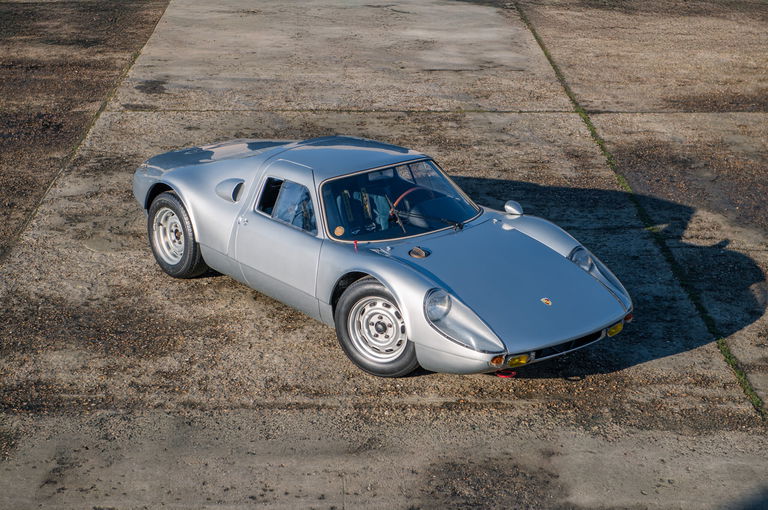The Fuhrmann engine is one of the most technically fascinating chapters in Porsche history. Designed as a racing engine in the 1950s, it is still regarded today as a masterpiece of engineering. Its complex design enabled Porsche to achieve its first major motorsport successes and leaves no one indifferent with its unmistakable sound. At the same time, it was so intricately designed that it was only suitable for use in the most exotic dream cars of its time. To this day, the type 547 (later also known as the type 692 and 587) is a legend among Porsche fans – not only because of its performance, but also because of the person behind it: Ernst Fuhrmann.
Ernst Fuhrmann designed the Porsche Type 547 with vertical shafts (german: Königswelle) in the early 1950s
Born in Vienna in 1918, Ernst Fuhrmann began studying at his hometown’s University of Technology in 1936 after completing his schooling and military service. In 1947, he joined Porsche, where he soon played a key role in their engine development. In 1950, he completed his doctorate on valve trains in high-speed combustion engines – a topic that anticipated the core of his later work. Hence, a year later, Ferry Porsche commissioned him to develop a high-performance version of the 356‘s four-cylinder boxer engine. The result was the so-called Fuhrmann Type 547 engine in 1953.
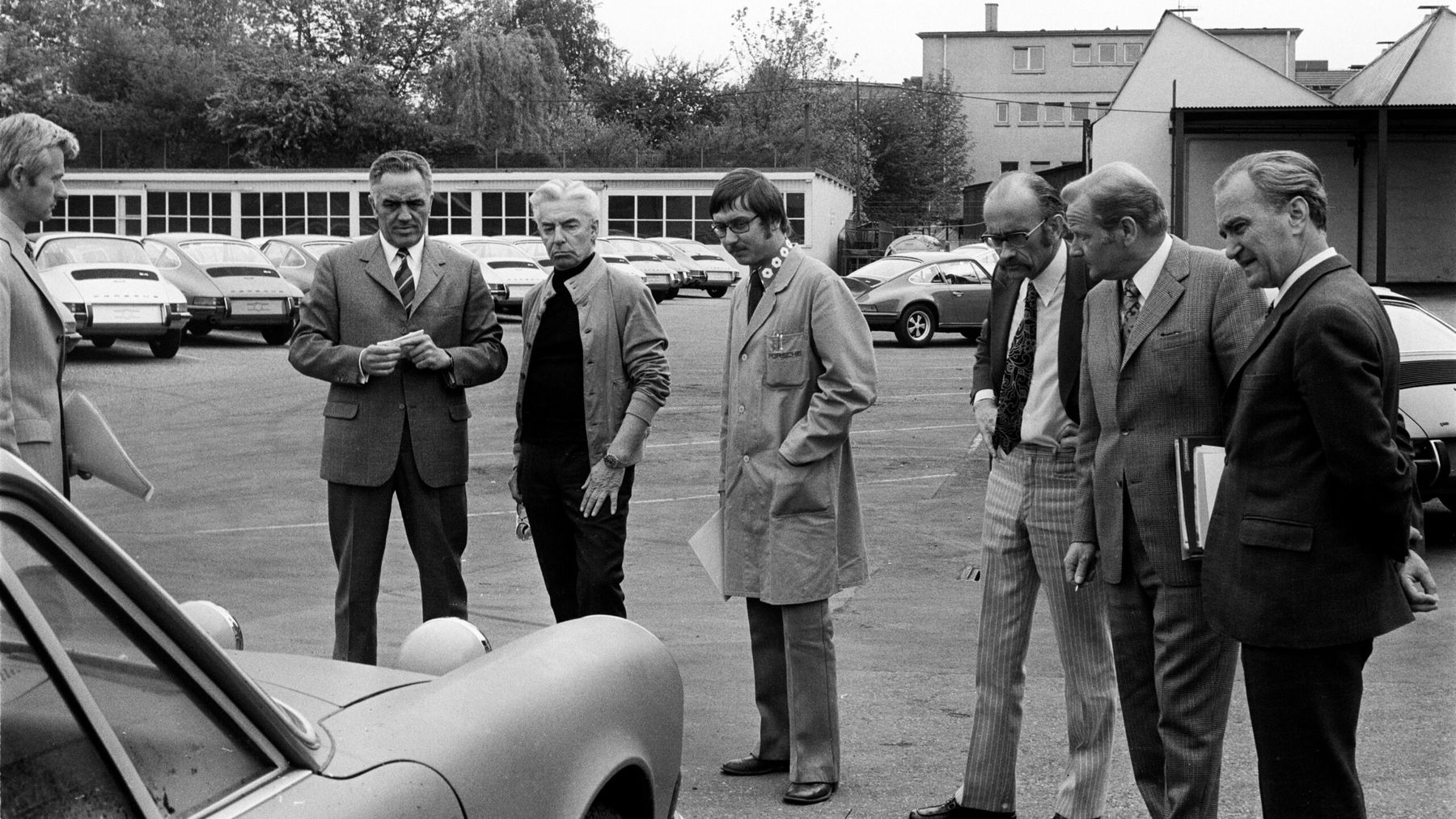
From 1956, Fuhrmann worked for Goetze, a company specializing in piston rings. But he returned: in 1971, initially as Technical Director and from 1972 as Chairman of the Executive Board of the new Porsche AG. This period saw the further development of the 911 as well as Fuhrmann’s ambitious Porsche 928 project, which was initiated to replace the 911 – with a well-known outcome.
The Fuhrmann engine was innovative and ideally suited for racing
The Fuhrmann Type 547 engine was an air-cooled four-cylinder boxer engine with two overhead camshafts per cylinder bank, dual ignition – i.e. two spark plugs per cylinder – and dry sump lubrication. Around 300 components had to be mounted inside the compact lightweight aluminum engine housing, including the much-cited king shafts to drive the camshafts. This made the Fuhrmann engine one of the most advanced combustion engines used in cars during the early 1950s. The unit was capable of revving up to 8,000 rpm, thermally stable and ideally suited for racing.
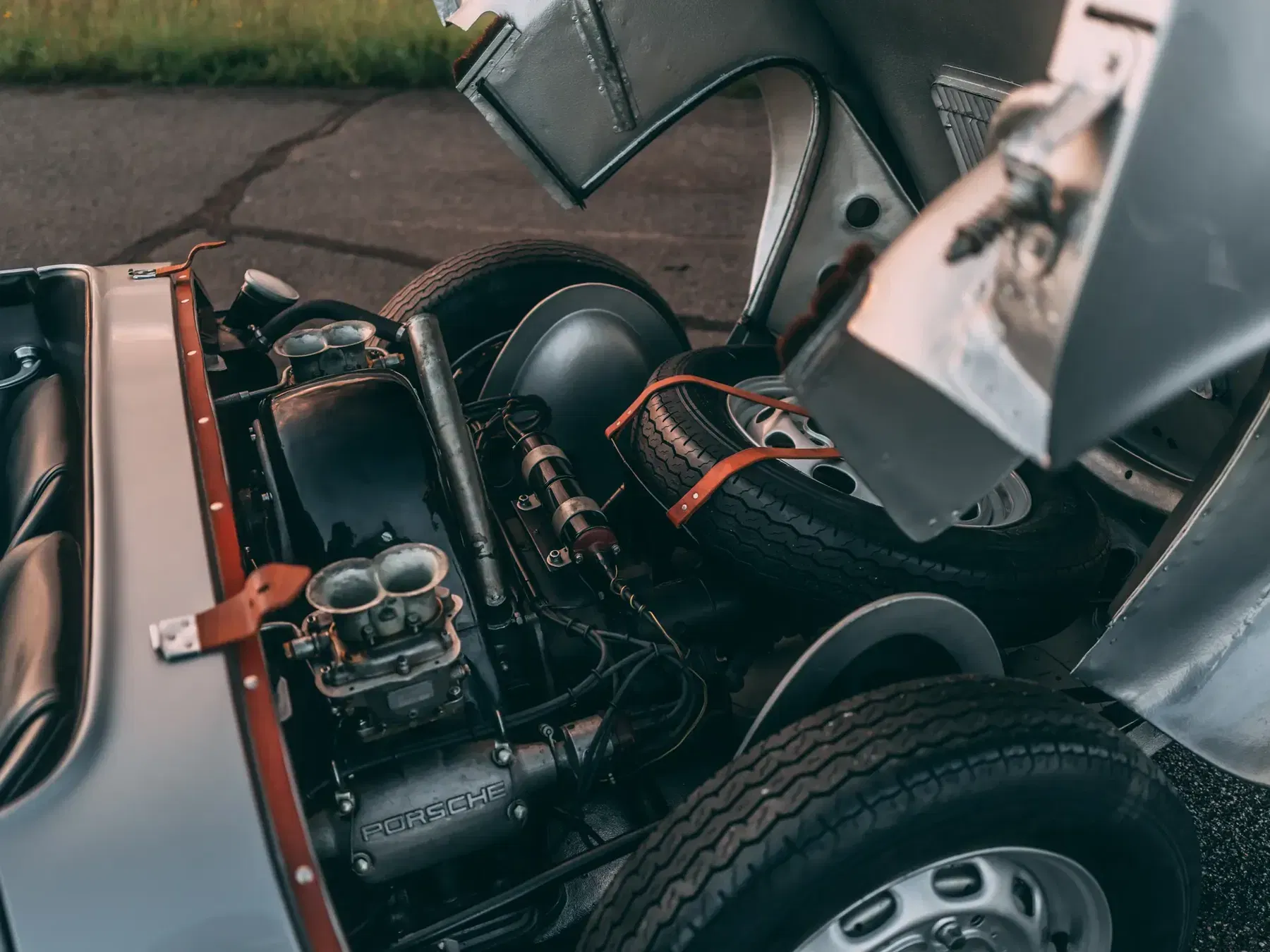
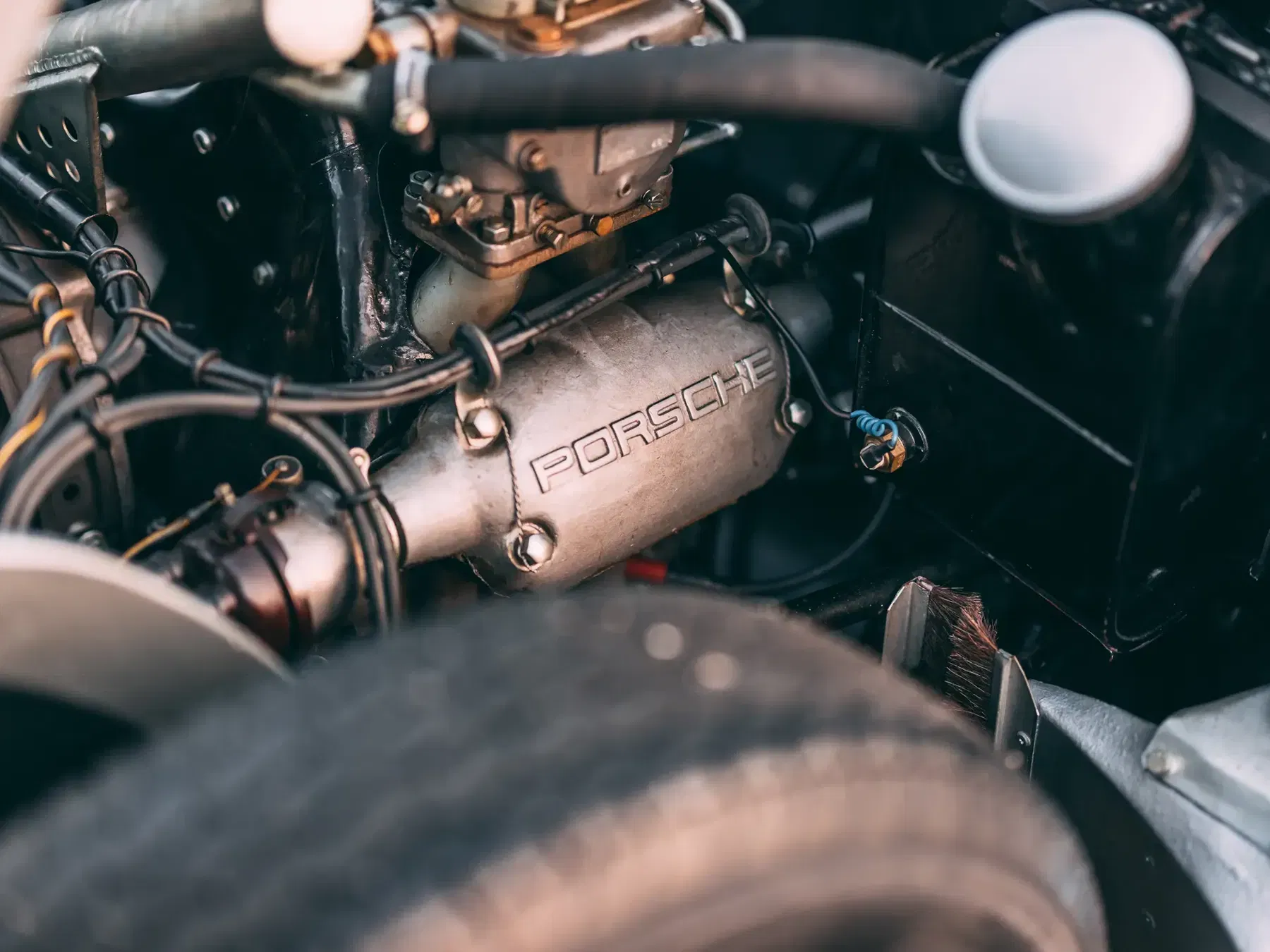


It’s no surprise, then, that the engine developed by Ernst Fuhrmann for the Porsche 550 1500 RS Spyder won numerous class victories in the biggest endurance races of the time. For example, at the 24 Hours of Le Mans and the Targa Florio. In 1954, the performance of the 1,498 cc, 110 hp engine in the 550 kg Spyder was very impressive: it could sprint to 100 kph in 10 seconds, with a top speed of 220 kph. In its final iteration, the Fuhrmann engines in the Porsche 904, with a displacement of 1,966 cc, achieved up to 180 hp. And they were even used in the Porsche 787 Formula 1 car in 1961, producing an additional ten horsepower over the 904.
The Fuhrmann engine (Type 547) is also known as the “king-shaft engine” because it drives its camshafts via vertical shafts rather than timing belts, chains or gears.
The term king-shaft refers to a mechanically driven shaft with a bevel gear at each end, also known as a crown gear. This is where the name king-shaft (German: Königswelle) comes from. In the Fuhrmann engine, it connects the crankshaft with the overhead camshafts in the cylinder heads. In contrast to timing chains or timing belts that are otherwise used, the king-shaft offers direct, almost zero-play and therefore extremely precise control of the camshafts – ideal for high-revving racing engines.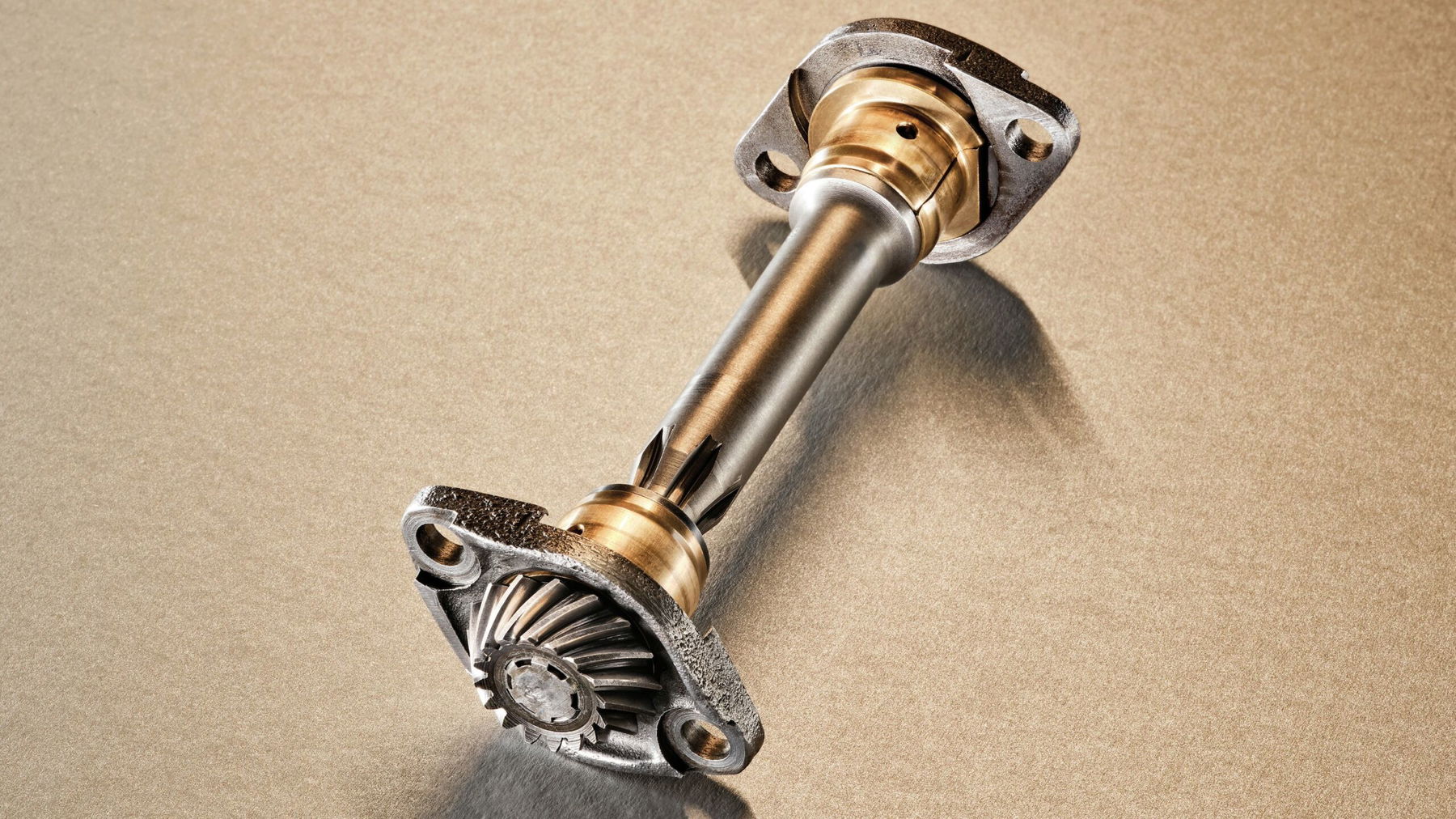
© Rafael Krötz, Christophorus 412
The Type 547 designed by Ernst Fuhrmann was used in the following model series from 1954 to 1963:
– Porsche 550
– Porsche 645
– Porsche 718 RSK
– Porsche 356
– Porsche 787
– Porsche 804
– Porsche 904
Ernst Fuhrmann’s four cam engine laid the foundations for Porsche’s international reputation in racing
The Fuhrmann engine has often been referred to as the Carrera engine. This has its origins in the Mexican road race Carrera Panamericana. In 1954, Hans Hermann won the class in a Porsche 550 Spyder with a Type 547 engine and came third overall. This was the reason for the Spanish nickname given to the Fuhrmann engine, which also found its way into Porsche’s production models with the 356 A GS Carrera for the 1956 model year.
Porsche achieved numerous international successes in motorsport with the king-shaft, or Fuhrmann engine. First in the 550 Spyder on the Carrera Panamericana, later also in the 718 RSK and 904. © Porsche
In 1956, the high-performance engine also made Porsche’s first overall victory at the Targa Florio possible. Umberto Maglioli was the fastest to complete the ten laps of the 72 km road course in Sicily – once again in a 550 Spyder. These successes brought Porsche worldwide fame. The Fuhrmann engines therefore laid the foundations for Porsche’s international reputation of extracting maximum performance from small displacement engines combined with high reliability.
Achilles’ heel complexity – the Fuhrmann engine is only for real specialists
While the performance of the Fuhrmann engine left little to be desired, it wasn’t really suitable for mass production. This is because its complexity, constant further development and the choice of materials make it a difficult unit to master. Different metals come together in the engine. These expand to varying degrees as the temperature rises and contract to varying degrees at particularly low temperatures. Due to the extremely low tolerances – the intermediate shaft bearings, for example, were designed with “zero play” at room temperature – the engines were therefore not frost-resistant.
Fuhrmann’s racing engines were only used in racing cars or exotic dream cars of the time. In total, not even 2,000 Type 547-based engines were built © Schaltkulisse, Gooding & Company & Serge Heitz Automobile Consulting
What’s more, hardly any of the 2,000 or so Fuhrmann engines built were the same. Porsche continued to develop the concept for more than ten years. Even small deviations during assembly led to problems – the Fuhrmann engine was more of a clockwork than a daily drivable car engine. Its complex technology was manageable for racing teams with specialist knowledge and machinery, but hardly economically viable for series production. For this reason, Fuhrmann engines were reserved for racing cars and the highly exclusive 356 & 904 Carrera models.
The Fuhrmann engine was more of a clockwork than a daily drivable car engine.
A legacy with contradictions
As impressive as the Type 547 was, its mechanical underpinnings were too complex for mass production. Maintenance was expensive, production was demanding and the advantage in everyday use was minimal. With the introduction of the 911 and the six-cylinder boxer engine designed by Hans Mezger, the king-shaft engine was technologically obsolete. When the last production car with the Fuhrmann engine was built in 1965, the era was over. Fuhrmann later referred to the engine, which had earned him worldwide recognition, almost with a grin as a “youthful sin”. It shows an honest retrospective from an engineer who knew that technical progress sometimes also meant overtaking oneself.

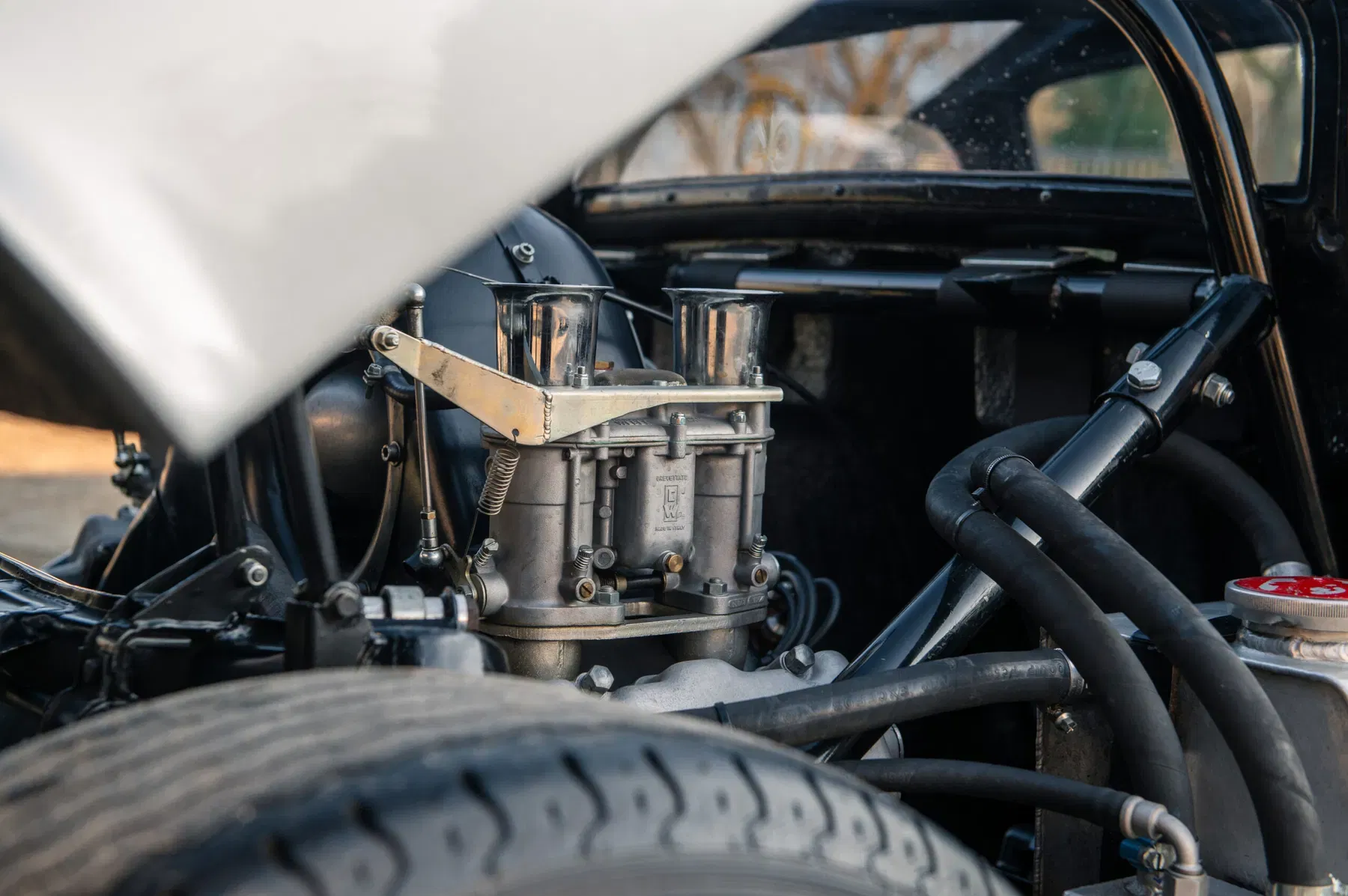

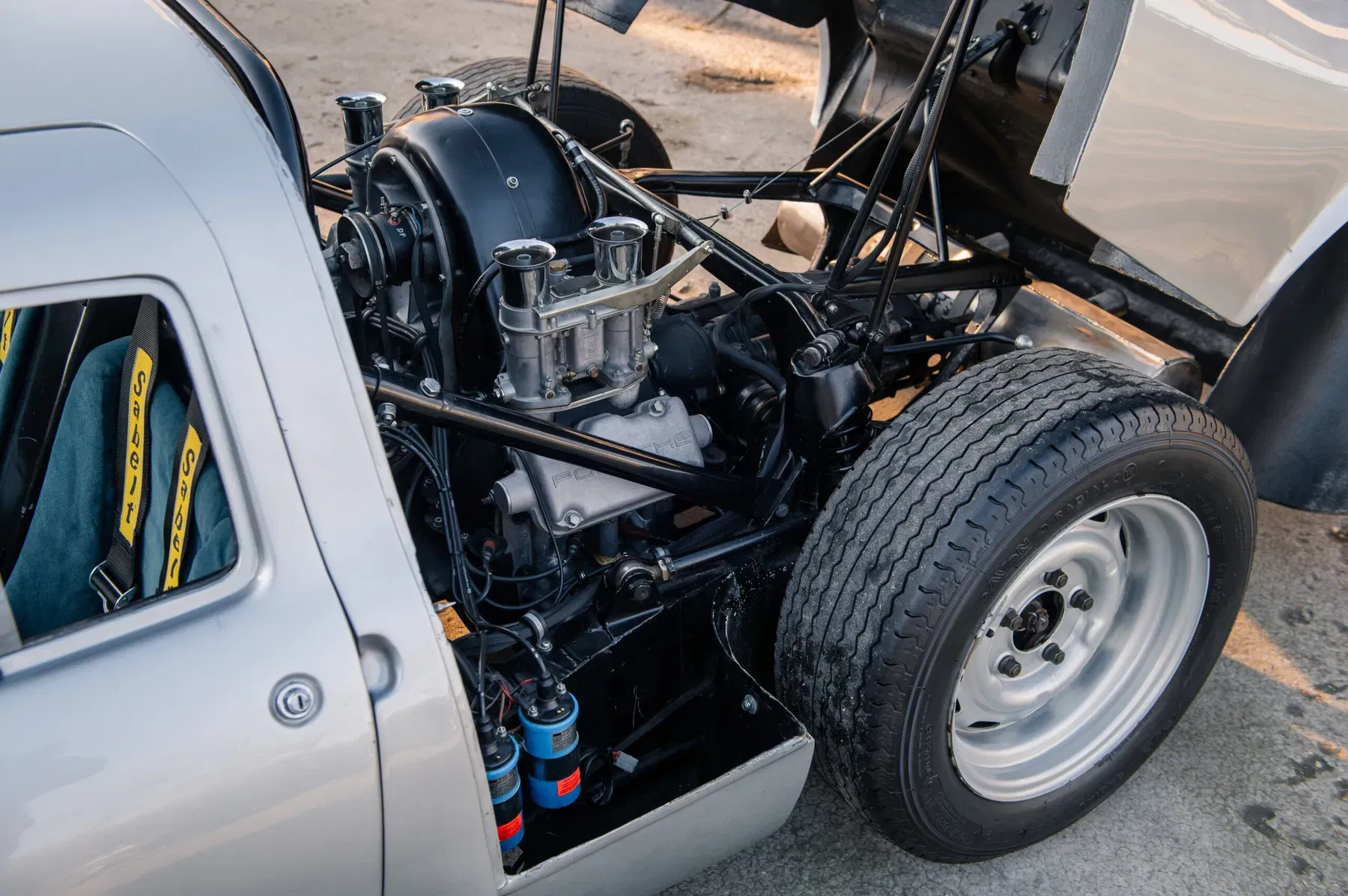
Ernst Fuhrmann shaped Porsche on two levels: as an ingenious engine developer and later as Chairman of the Executive Board. It seems almost tragic that his two great visions of all things – the king-shaft engine and the Porsche 928 – did not succeed in the long term. But both concepts had their time, their fans and their significance. Without the Fuhrmann engine, Porsche would hardly have been as successful in motorsport in the 1950s. And without the 928, there might never have been proof that Porsche could also build world-class GTs. Fuhrmann’s name thus remains firmly anchored in Porsche history – as a designer, as a driver, as a pioneer.
© Cover picture: Rock ‘n Roll Classics
Elferspot magazine
You have reached your article limit for this month.
Become an Elferspot Member now and get unlimited access to our Elferspot Magazine and other features!
- No obligations or charges.
- We help you find your dream car: get newly added cars straight into your mailbox.
- Your own watch list for your favorite cars.
- Unlimited access to Elferspot Magazin.
- -10% welcome discount for Elferspot textile products
- Successfully sell your Porsche via Elferspot.
